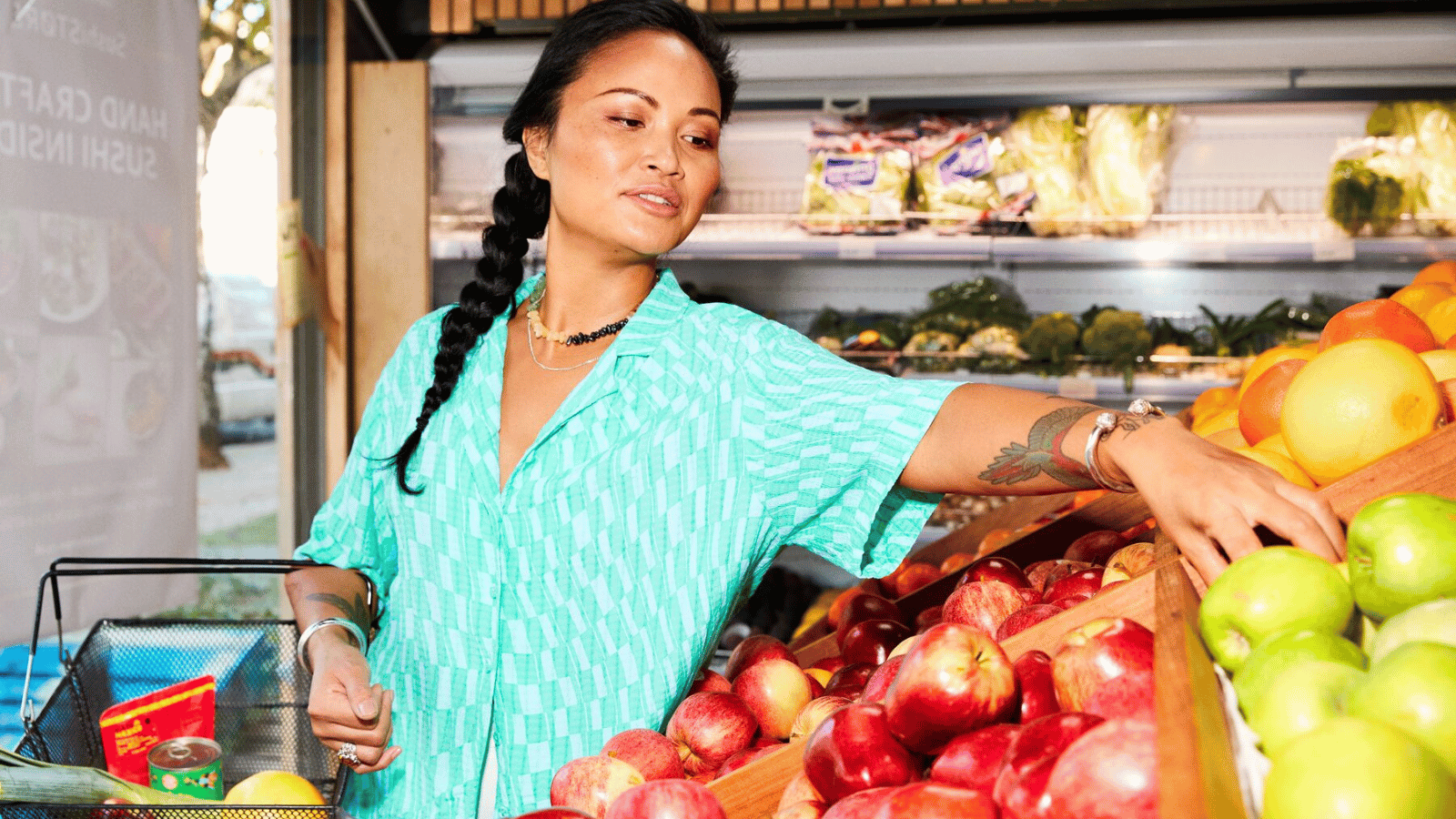Plan your next grocery shop


Top takeaways:
How to build the best shopping list:
- Check your schedule
- Prioritise ZeroPoint foods
- Use pre-prepped ingredients
- Experiment with spices
- Stock up on satisfying staples
Here are some tips that make it easier to plan meals and pick foods that help fill you up.
Grocery shopping guide
Your kitchen is where it all happens, so stocking up on nutritious ingredients is the most powerful tool when it comes to sticking to your plan. Having foods nearby that help fill you up and stay in your Points Budget prepares you to make choices that feel really right for you. No spur-of-the-moment decisions when you’re already starving. Let’s be honest: Nothing good happens when the only thing in your kitchen is a tea bag and semi-sweet, semi-stale chocolate chips!
We get it, grocery shopping can sometimes feel totally overwhelming. There are so many aisles and choices and who even knows where to start?! We're all about having a shopping list—use the one below to help take the guesswork out of navigating the aisles. Here are some tips and tricks that we think can help:
1. Start by checking your schedule.
Where you are, physically, when you eat can impact food decisions. Do a quick calendar-check and think about where you’ll be spending time in the next week. For example, if you’re going to eat at your desk (even if that desk is in your living room), it’ll help you shop for the ingredients that make it easier to turn the meals you’re planning into a reality.
2. Get familiar with your ZeroPoint food list.
We always recommend shopping your ZeroPoint foods first so you know you’ll have your go-to foods on-hand no matter what. And regardless of your plan, having fruits and veggies in your kitchen makes it that much easier to add them to meals or grab for a snack! Outside of that list, your in-app barcode scanner is great for finding out the Points of other foods.
3. Take short-cuts when you can.
We all have days where you don’t have the time or energy to plan an elaborate meal or prep a ton of things. That’s why we love pre-prepped ingredients. Having frozen chopped veggie blends, diced onions and minced garlic can make it that much easier to prepare a healthy meal.
4. Spice it up!
Pick a new spice or herb to experiment with each time you shop—and make it something you’re excited to try. Then type it into the WeightWatchers® app and see all the recipes that come up. Trying new flavours and cuisines is half the fun of shopping and cooking!
5. Stock up on satisfying staples.
Some nutrient-dense foods will be higher in Points than others, but, it doesn’t mean they’re off-limits. It’s actually the exact opposite: YOU NEED THOSE, TOO! Especially when it comes to ingredients you use to cook your favourite dishes. Foods like nut butters, cooking oils, avocado, and cheese help make meals and snacks more filling and flavourful—which naturally helps you stay within your Budget, since you’ll feel less hungry later on.
Here’s what we want you to do...even if your next grocery trip isn't for a few days, make your list now. Or make a practice list! You don’t have to buy everything, think of it as a guide for the types of food to keep on-hand. And don’t fret if your grocery haul feels overwhelming! Like anything, this is something that takes practice.
WW kitchen staples shopping list
Consider this list your BFF (Best Food Friend) when grocery shopping. Use it to help write your own shopping list or as a reminder of better-for-you options to keep an eye out for while you’re wandering the supermarket aisles.
And don’t forget to highlight the ZeroPoint foods so you stock up on those while you shop.
PRODUCE
MEAT, POULTRY & FISH
DAIRY & EGGS
GRAINS & PASTA
BREAD & CEREAL
| CANNED FOODS & PANTRY STAPLES
SNACKS
FROZEN FOODS
SEASONINGS & CONDIMENTS
|
